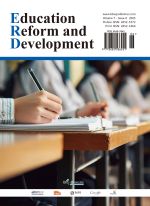Abstract
As an important part of outstanding traditional Chinese culture, the culture of the Grand Canal not only reflects the wisdom and strength of the nation but also carries a rich cultural spirit. In recent years, the state has attached great importance to the protection and inheritance of the Grand Canal culture. This paper explores how to integrate the cultural spirit of the Grand Canal into the ideological and political education of physical education courses in universities, analyzing its value orientation, content dimensions, and practical approaches. By combining theory with practice, it proposes the value of the Grand Canal cultural spirit in physical education courses, including guiding political ideology, shaping moral qualities, and inheriting regional culture. In addition, this paper also explores the innovation of teaching methods and evaluation systems to improve teaching effectiveness and promote the in-depth integration of the Grand Canal cultural spirit into contemporary physical education teaching in universities.
References
Liu Y, 2022, Reading Relay across 36 Cities in the Name of the Grand Canal. Reading and Growing into Talent, 2022(6): 20–23.
Yu L, 2017, A Brief Discussion on the Accomplishments of Excellent Traditional Chinese Culture of Teachers of Ideological and Political Theory Courses in Colleges and Universities. Beijing Education: Higher Education Edition, 2017(7): 4.
Li J, You J, 2023, Research on the Ideological and Political Education Competence of College Physical Education Teachers. Abstracts of the 13th National Sports Science Congress – Thematic Reports (School Sports Sub-Committee).
Liu X, 2018, Exploration and Innovation of TV Programs in the Dissemination of Traditional Culture. Youth Journalist, 2018(15): 2.
Cui Y, 2019, Research on the Working Path of “Three–Entries” in Independent Colleges from the Perspective of Collaborative Education. Youth and Society: Upper, 2019(36): 99–101.
Lu L, Xu Y, 2021, The Grand Canal Cultural Heritage and the Construction of National Memory. Zhejiang Academic Journal, 2021(5): 65–72.
Lighting the Road of Innovation with the Spirit of Scientists, 2021, China Awards for Science and Technology, 2021(2): 35–36.
Wang H, 2024, An Analysis of the Development Path of Excellent Traditional Culture from the Perspective of Upholding Integrity and Innovation. Frontiers of Social Sciences, 13(5): 777–782.
Feng L, 2025, Nourishing the “Chinese Heart” in Cultural Inheritance. Shaanxi Education (Comprehensive Edition), 2025(Z1): 19.
Xu H, 2024, Condensing the Immense Power of National Rejuvenation with the Spirit of Chinese Sports. Forum for Party and Government Cadres, 2024(8): 1.
Patriotism Is the Deepest and Most Lasting Emotion in the World, 2024, New Tibet (Chinese Version), 2024(11): 37.
General Administration of Sport of China, 2022, Strengthening Confidence in Sports Culture and Highlighting the Value of Sports Culture, visited on February 25, 2025, https://www.sport.gov.cn/n20001280/n20067701/n20067719/c24737192/content.html.
Li X, 2021, On the Grand Canal Aesthetics and Its Aesthetic Education Value. Art Observation, 2021(10): 13–15.
Jin X, 2024, Educational Evaluation Reform: Stimulating Vitality and Adding Momentum to the Construction of an Education–Powerful Country. Guangming Daily, 2024–05–21(013).
Xu X, Wang J, 2022, Construction of a Comprehensive Evaluation Index System for Ideological and Political Education in College Courses – Based on the Theoretical Framework of the CIPP Evaluation Model. Higher Education Management, 16(1): 47–60.
